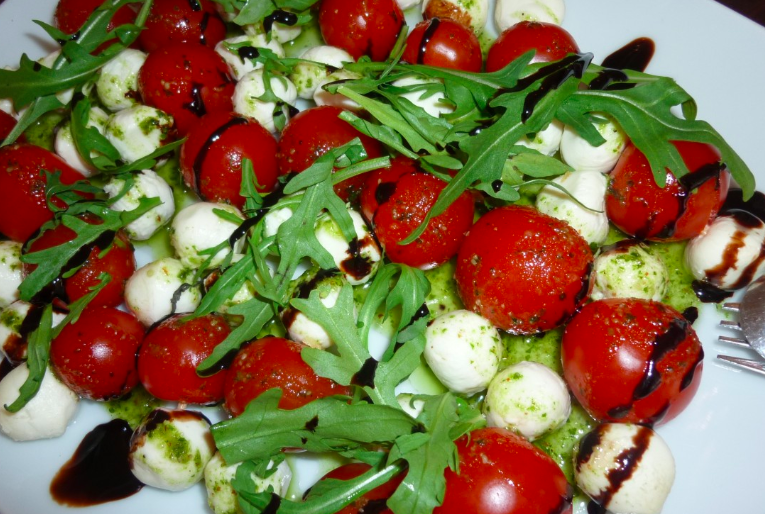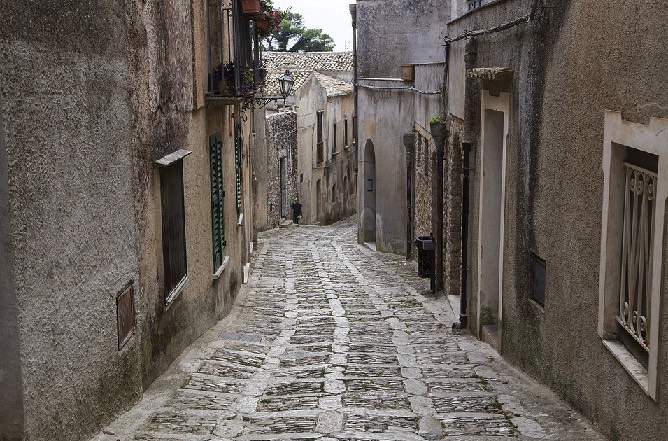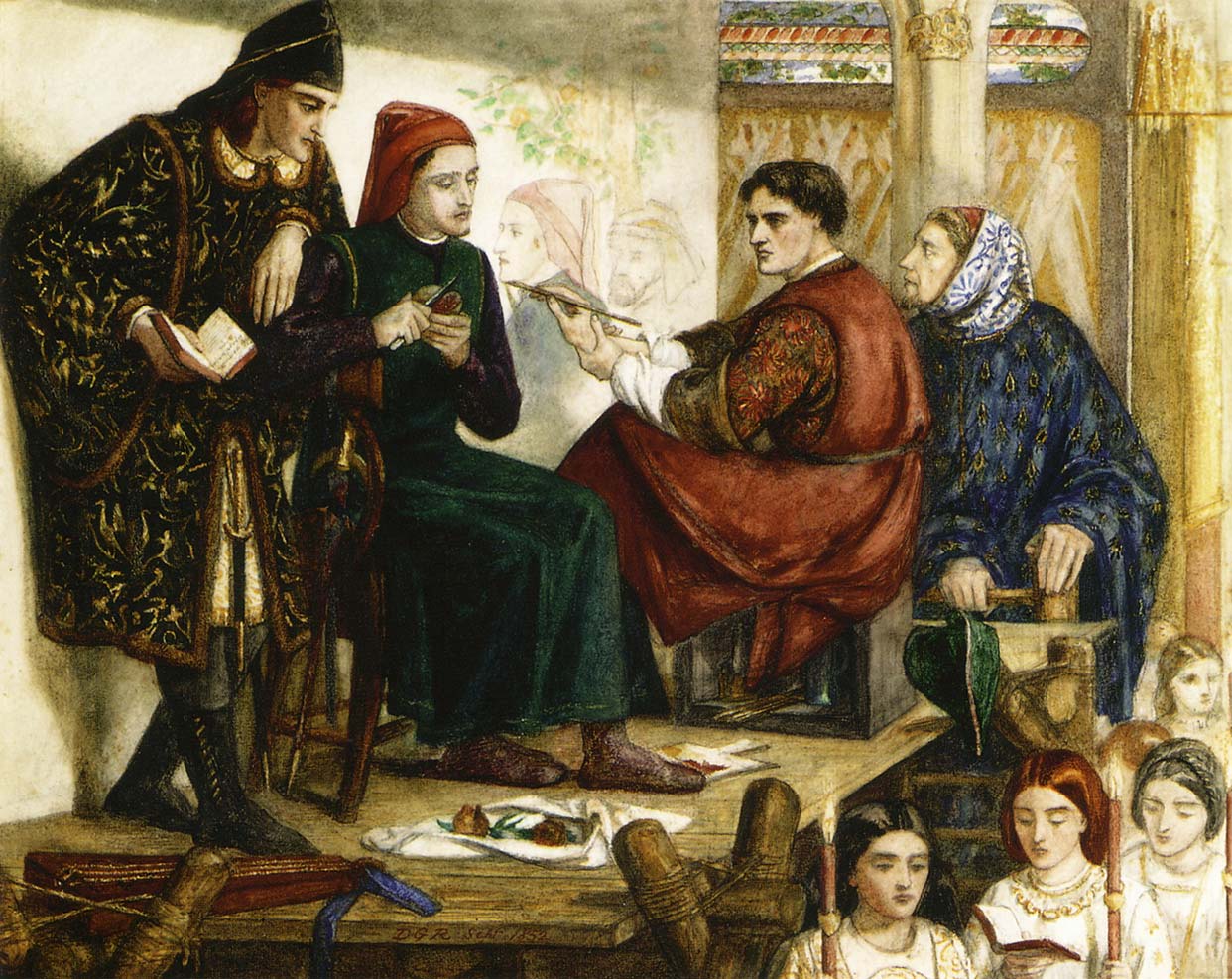
The Tomato Conquers Italy
The tomato is central to Italy’s love affair with food. For Italy was conquered by the tomato. It was a slow conquest, but transformed by the tomato, Italian food conquered the world. This story, so little known, is told in full in David Gentiloni’s 2010 book, Pomodoro! A History of the Tomato in Italy. Like all good tales, it has unexpected twists and turns.
The Context: A Food Culture
Of course Italian food does not live by tomato alone, so we need a little context. The health benefits of the “Mediterranean diet” are often noted and Italian food has been adopted around the world. Food in Italy (as in many parts of the world) is much more than nutrition. It is hearth and home, community and family. Through the social ritual of a shared meal bonds of love and fellowship are renewed and nurtured. It is still true that women are often at the centre of these vital processes which nurture community life, although like many countries in the world Italian women have also entered all walks of life and innumerable professions; sometimes having to break through social barriers as old as time to do so.
Moreover food itself is not a long dead anonymous industrial product as it sometimes seems in our hyper-modern world. People, food and land are intimately connected as much food is grown in fields surrounding a town. In smaller communities, where older agricultural traditions continue to be practised, food can still be bought at farmers’ markets or from innumerable small scale ‘artigiani’ who specialise in this or that product: the caseificio who produces the most wondrous mozzarellas; perhaps a local butcher in a nearby town known for their particularly excellent fennel pork sausages; the gelateria that serves heavenly and locally made gelati; the paneficio which (even in the scorching heat of summer) bakes the breads, pizzas and other baked goods that like a flag are distinctive to that town or region; the pasticceria proud of its own unique creations. And of course the immense varieties of olive oils cold pressed locally from local olive groves which surround many towns in Italy.
Sadly (although resilient) such traditional food practices and the culture and community life it supports is under threat in many parts of Italy as supermarkets begin to soak up more and more of economic life and the industrialisation of food production and its long distance distribution proceeds apace. The description above would not necessarily be familiar in larger cities. However as we shall see below, traditions are not sometimes as ancient as might be imagined.
The Tomato in Italy
The tomato, although rechristened as the “golden apple” or pomodoro in Italy, was indeed slow in its progress. How did this humble fruit conquer the Italian palette?
The story of course begins far away in a world across an ocean for the tomato or “tomatl” comes from Aztec Mexico. It returned to Europe with the conquistadores, whose looting and destruction of the new world, incidentally included the collection of what was then a little prized curiosity: an “acidic” plant unfamiliar and unpleasant to the European palette.
In this first phase the tomato was just one more exotic plant from the new world, regarded as possibly poisonous and unpleasant to taste. It appears in the works of botanists such as Giovanni Domenico Sala of Padua in 1628 who noted that only the unwise ate tomato and who associates it with the eating of various kinds of insects. The suspicion of the tomato was to endure for centuries.
The Tomato Catches On
From this unpromising beginning the Spanish adoption of the tomato into Spanish cooking was to slowly seep into Italy. The first dishes in which the tomato appears are not those now regarded as traditional. Thus Latini, a cook, in the court of Naples in 1696 offers recipes in “the Spanish style”. In one recipe tomatoes are double cooked – first in embers to remove the skin and then mixed with chillies, onions and thyme in a kind of salad. In another recipe they are diced as part of an eggplant dish. Their use also appears as ingredients in a veal, pigeon and chicken casserole.
By 1800 the tomato is widely cultivated in southern Italy (a fact known thanks to a Napoleonic era statistical survey of the region). Moreover they were relatively cheap compared to other vegetables. Similarly in Tuscany the botanist Ottaviano Targioni Tozzetti was able to write by 1813 that tomatoes were cultivated in all the market gardens and their use was “very common”. The tomato was spreading across Italy.
Gentiloni traces the development of preservation of the tomato (an essential step in its conquest of Italy). By the mid-eighteenth centuries the Sardinians were producing sun dried tomatoes for storage and later use. Another form of preservation that spread widely was the drying of tomato paste into sheets that were rolled up and were known as “conserva nera”. From the 1860s we find the horticulturalists Marcellino and Giuseppe Roda describing the use of a bain-marie to boil sealed bottles of tomato sauce. As Gentiloni comments “this is today’s passata” (and an essential ingredient in Italian cooking). A French archeologist, who travelled in Calabria in the 1880’s describes the Italian ritual that grew around the making of passata.
We are, … in the season in which, in every Calabrian house, tomato preserve is made for use during the rest of the year. It is a solemn occasion in the popular life of these lands., a kind of festive celebration, an excuse for get-togethers and gatherings … Neighbours, and especially neighbourhood women, get together in different houses one after the other for the making of conserva di pomi d’or, a procedure that culminates with a large meal; and they gossip as much as they can while crushing and cooking the tomatoes. It is here that for several months the locale’s chronicle of scandal is identified and commented on; it is here that those old rustic songs, … are repeated from generation to generation.
It is to Naples that we must turn for the classic uses of the tomato in Italian cuisine. Paradoxically the decline in food consumption after the 1861 unification of Italy (meats and cereals declined) drove the poor to greater consumption of fruits and vegetables. Tomatoes were consumed, either raw or unripe, and rotting tomatoes were being saved for conservation. Achille Spatuzzi and Luigi Somma (in the context of urban suffering) describe a familiar recipe.
“In the summer months, while [the tomatoes] are still unripe, they are eaten raw in a salad with onion, oregano, and so on.”
The same authors refer to “pizza” which they need to explain because of its unfamiliarity.
[pizza is] seasoned on the top with an abundance of oil or pork fat, with cheese, oregano, garlic, parsely, mint leaves, with tomato especially in summar, and finally sometimes even with small fresh fish.”
Naples as it happened was also the capital of pasta, and with the arrival of the passata, pasta and tomato came together, and the world never looked back. By 1847 a recipe for “macaroni a la napolitana” was appearing in an American cookbook and by the 1880s the tomato had conquered. The Neapolitan journalist Matilde Serao records the typical scenes of street food of Napoli of the 1880s. While pasta has endured, the street vendors long ago gave way to new forms of commerce.
All the streets of the city’s popular quarters have one of these taverns that set up their cauldrons outside, where macaroni are always on the boil with pots of simmering tomato sauce and mountains of grated cheese … This set up is very pictureseque, and a few painters have painted it … and in the collections of Neapolitan photographs that the English buy … there is always the macaroni seller’s table.

As Florence is the heart of Italian poetry and literature, with its heritage of pizza and pasta, Naples is the soul of Italian food. They are now parts of the shared heritage of humankind every bit as valuable as Dante’s Divina Commedia. (Indeed in December 2017 UNESCO officially granted world intangible heritage status to Napoli’s pizza).
Tomato Wisdom
The tomato doesn’t appear in every Italian dish, but without the tomato, Italian cuisine would simply not be what it is. Pasta can be enjoyed with many other toppings, but the classic is undoubtedly a rich tomato sauce patiently nursed to perfection in the hours long process it requires. Good fresh mozzarella is wonderful by itself, but even better with fresh tomatoes which have been grown locally in the fields around the town.
However as its history in Italy suggests, even the tomato has something to teach us. New arrivals can appear foreign: strange and potentially dangerous. Yet we find with time that they are not what we feared and indeed they prove a blessing. They may, in time, become so dear that we could not imagine our way of life without them. The tomato also teaches us that what might be imagined as long entrenched in custom can in fact be recent innovations. What might seem timeless Italian food culture only caught on even in Italy only a little more than 100 years ago. Culture does not stay still. It adapts and changes as needed by the people who create it and continually reinvent it. As per L.P Hartley’s well-known saying: “the past is a foreign country”. It is a truth which forcefully impresses itself on any migrant who seeks to return home after many years. The world from which they came has long vanished and can never be returned to. It is pointless to imagine that we can perfectly preserve the Italy as it is today; or to imagine that today’s Italy will be any less foreign to Italians a hundred years from now.
Primary Source
All quotations in this article, as the general outline of the history provided above draw from David Gentiloni, Pomodoro! A History of the Tomato in Italy, ebook version. The work contains much more detail of the tomato’s progress and the historical context as well as taking the story into the present day.








